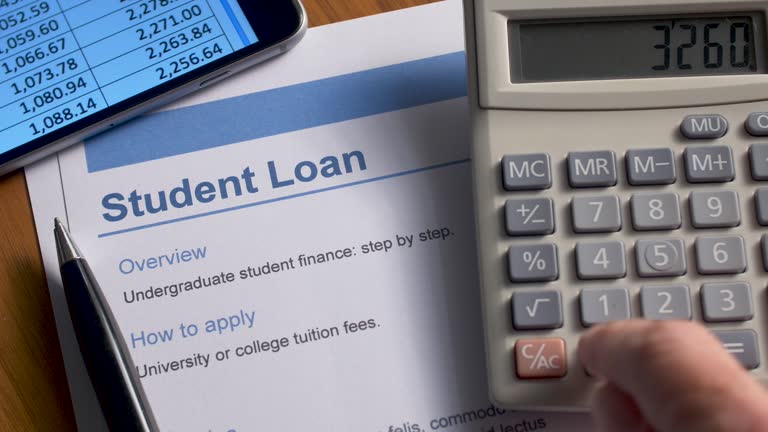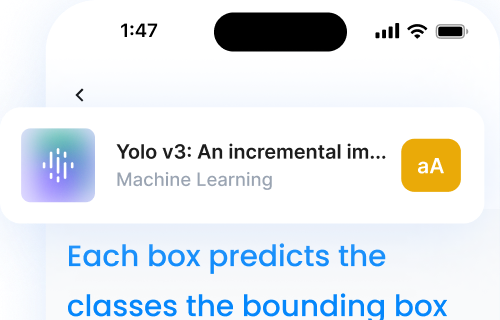In the ever-evolving landscape of higher education financing, understanding student loan interest rates and fees is crucial for both current and prospective students. This comprehensive guide delves into the average student loan interest rates in 2024,
providing valuable insights into federal and private student loans, their interest rates, and how these rates impact borrowers. Whether you’re considering taking out a student loan or looking to refinance existing debt, this article will equip you with the knowledge needed to make informed decisions about your educational funding.
Understanding Student Loan Interest Rates
Before diving into the specifics of 2024 rates and fees, it’s essential to grasp the concept of student loan interest and how it affects borrowers. Interest is the cost of borrowing money, expressed as a percentage of the loan amount. This interest accrues over time for student loans and is added to the principal balance, increasing the total amount owed.
Types of Student Loan Interest Rates
There are two main types of interest rates for student loans:
1.Fixed Interest Rates: These rates remain constant throughout the life of the loan, providing predictability for borrowers.
2.Variable Interest Rates: These rates can fluctuate over time based on market conditions, potentially resulting in lower initial rates but with the risk of increasing in the future.
Federal Student Loan Interest Rates in 2024
Federal student loans are offered by the U.S. Department of Education and typically provide more favorable terms, such as subsidized loans, compared to private loans. Let’s examine the current federal student loan interest rates for the 2024-2025 academic year.
Direct Subsidized and Unsubsidized Loans for Undergraduates
For undergraduate students, the interest rate on both Direct Subsidized and Unsubsidized Loans is fixed at 5.50% for loans disbursed on or after July 1, 2024, and before July 1, 2025. This rate applies to new loans taken out during this period.
Direct Unsubsidized Loans for Graduate and Professional Students
Graduate and professional students borrowing Direct Unsubsidized Loans face a slightly higher fixed interest rate of 6.54% for the 2024-2025 academic year.
Direct PLUS Loans for Parents and Graduate Students
Direct PLUS Loans, available to parents of dependent undergraduate students and to graduate or professional students, carry the highest federal student loan interest rate at 7.54% for the 2024-2025 academic year.
How Federal Student Loan Interest Rates Are Determined
It’s important to note that Congress sets federal student loan interest rates each year based on the 10-year Treasury note yield plus a fixed margin. These rates are determined annually and remain fixed for the life of the loan once disbursed, meaning rates are fixed until the loan is fully paid off.
Private Student Loan Interest Rates in 2024

While federal loans offer standardized interest rates, private student loan rates can vary significantly based on factors such as the borrower’s credit score, income, and the lender’s policies. Let’s explore the average private student loan interest rates in 2024.
Fixed-Rate Private Student Loans
As of July 2024, the average fixed interest rate for private student loans ranges from 4.50% to 14.00%, depending on the borrower’s creditworthiness and the loan term.
Variable-Rate Private Student Loans
Variable-rate private student loans typically offer lower initial rates but come with the potential for rate increases over time. In July 2024, the average variable interest rates for private student loans range from 3.75% to 12.50%.
Factors Affecting Private Student Loan Interest Rates
Several factors influence the interest rate offered on private student loans:
1. Credit Score: Borrowers with higher credit scores generally qualify for lower interest rates. 2. Income: A stable income can help secure more favorable rates. 3. Loan Term: Shorter repayment terms often come with lower interest rates. 4. Cosigner: Having a creditworthy cosigner can potentially lower the interest rate. 5. Lender: Different private lenders may offer varying rates and terms.
Comparing Average Student Loan Interest Rates: Federal vs. Private
When considering student loan options, it’s crucial to compare the average student loan interest rates between federal and private loans. Here’s a breakdown of how they stack up in 2024:
Federal Student Loan Interest Rates (Fixed)
- Undergraduate Direct Loans: 5.50%
- Graduate Direct Unsubsidized Loans: 6.54%
- Direct PLUS Loans: 7.54%
Average Private Student Loan Interest Rates
- Fixed Rates: 4.50% – 14.00%
- Variable Rates: 3.75% – 12.50%
While private loans may offer lower rates for highly qualified borrowers, federal loans generally provide more benefits and protections, such as income-driven repayment plans and loan forgiveness options.
Current Student Loan Interest Rates in July 2024

As we move into the second half of 2024, it’s essential to stay informed about the most current student loan interest rates. Here’s an overview of the rates in effect as of July 2024:
Federal Loan Interest Rates (July 1, 2024 – June 30, 2025)
- Direct Subsidized and Unsubsidized Loans (Undergraduate): 5.50%
- Direct Unsubsidized Loans (Graduate/Professional): 6.54%
- Direct PLUS Loans: 7.54%
Private Loan Interest Rates in July 2024
Private student loan rates continue to fluctuate based on market conditions and individual lender policies. As of July 2024, borrowers can expect the following average ranges:
- Fixed Rates: 4.50% – 14.00%
- Variable Rates: 3.75% – 12.50%
It’s important to note that these rates can change frequently, and the actual rate offered may vary depending on the borrower’s financial profile and the specific lender.
How Interest Rates Impact the Overall Cost of Your Loan
Understanding how interest rates affect the total cost of your student loan is crucial for making informed borrowing decisions. Let’s explore this concept further:
Calculate Your Student Loan Interest
To calculate the interest on your student loan, use the following formula:
Daily Interest = (Outstanding Principal Balance × Interest Rate) ÷ 365
This daily interest is then multiplied by the number of days in your billing cycle to determine the amount of interest that accrues each month.
The Impact of Interest Over the Life of the Loan
Even small differences in interest rates can significantly impact the total amount you’ll repay over the life of the loan. For example:
- A $10,000 loan at 5% interest over 10 years would result in total interest payments of $2,728.
- The same loan at 7% interest would result in total interest payments of $3,933.
This $1,205 difference highlights the importance of securing the lowest possible interest rate.
Strategies to Secure the Best Student Loan Interest Rates

Whether you’re taking out a new loan or considering refinancing, here are some strategies to help you secure the best student loan interest rates:
1. Improve Your Credit Score: A higher credit score can qualify you for better rates on private loans. 2. Consider a Cosigner: Adding a creditworthy cosigner can potentially lower your interest rate. 3. Compare Multiple Lenders: Shop around and compare offers from various private lenders to find the best rates. 4. Choose Shorter Loan Terms: Opting for a shorter repayment period often results in lower interest rates. 5. Explore Fixed vs. Variable Rates: Weigh the pros and cons of fixed and variable rates based on your financial situation and risk tolerance. 6. Look into Autopay Discounts: Many lenders offer a small interest rate reduction for setting up automatic payments.
The Future of Student Loan Interest Rates
While it’s impossible to predict future interest rates with certainty, understanding the factors that influence them can help borrowers make informed decisions:
Federal Student Loan Rates
Federal student loan interest rates are tied to the 10-year Treasury note yield and are set annually by Congress, reflecting the broader market conditions for federal interest rates. Economic factors and government policies can influence these rates in the coming years.
Private Student Loan Rates
Private student loan rates are more directly influenced by market conditions, including the Federal Reserve’s monetary policy and overall economic health. Unlike federal student aid, these rates can vary significantly. As these factors change, so too may private student loan interest rates.
Refinancing: A Potential Path to Lower Interest Rates
For borrowers with existing student loans, refinancing can be an option to potentially secure a lower interest rate. Here are some key points to consider:
Benefits of Student Loan Refinancing
- Potential for lower interest rates
- Option to switch from variable to fixed rates (or vice versa)
- Possibility of lower monthly payments
- Opportunity to consolidate multiple loans
Considerations Before Refinancing
- Loss of federal loan benefits (for federal loans refinanced into private loans)
- Impact on loan forgiveness eligibility
- Creditworthiness requirements
- Potential fees associated with refinancing
Average Student Loan Interest Rates: Historical Context
To better understand the current landscape of student loan interest rates, it’s helpful to look at historical trends:
Federal Student Loan Interest Rates (Past 5 Years)
- 2020-2021: 2.75% (Undergraduate), 4.30% (Graduate), 5.30% (PLUS)
- 2021-2022: 3.73% (Undergraduate), 5.28% (Graduate), 6.28% (PLUS)
- 2022-2023: 4.99% (Undergraduate), 6.54% (Graduate), 7.54% (PLUS)
- 2023-2024: 5.50% (Undergraduate), 7.05% (Graduate), 8.05% (PLUS)
- 2024-2025: 5.50% (Undergraduate), 6.54% (Graduate), 7.54% (PLUS)
Private Student Loan Interest Rates
Private student loan rates have generally followed broader market trends, with some fluctuations based on economic conditions and lender policies.
Navigating Student Loan Interest Rates in 2024
As we’ve explored in this comprehensive guide, understanding student loan interest rates is crucial for managing the cost of higher education. In 2024, federal student loan interest rates remain fixed for the academic year, while private student loan rates continue to vary based on individual factors and market conditions. Consider whether you may need to refinance your student loans to take advantage of better terms.
Key takeaways for borrowers:
1. Federal loans often offer more favorable terms and protections compared to private loans. 2. Private loans may provide lower rates for highly qualified borrowers but come with fewer borrower protections. 3. Always compare options from multiple lenders to find the best rates and terms. 4. Consider the long-term impact of interest rates on the total cost of your loan. 5. Stay informed about current rates and trends to make educated borrowing decisions.
By staying informed and carefully considering your options, you can navigate the complex world of student loan interest rates and make choices that align with your financial goals and educational aspirations.









